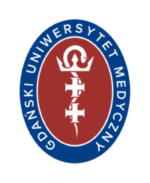EU Macro-regions can reduce the divide between regional EU research and innovation potentials
By Wolfgang Blank, Chairman and Peter Frank, General Secretary, ScanBalt® fmba; Hicham Abghay and Verena Neubauer, Project Managers, Steinbeis-Europa-Zentrum; Jonathan Watson,Executive Director, Health ClusterNet.

The divide in EU research potential and the associated gap between innovation leaders and innovation followers are significant both between EU macro-regions and within the macro-regions themselves. In the Baltic Sea Region (BSR) there is for example a clear divide between east and northwest, being made more profound by a brain drain of talent from some regions [1][2][3]. Despite this, macro-regions can be a valuable tool to help reduce these divides, facilitate critical EU benchmarks and achieve Europe 2020 priorities.
The shortcomings of EU support and the role of macro-regions
EU support – mainly through the Research framework programme and the Structural Funds – have generated positive effects not least in relation to research capacity building, access to knowledge, mobilization of important resources and international expertise together with strengthening of infrastructure.
However, several factors have prevented full achievement of the Europe 2020 strategy for smart, sustainable and inclusive growth besides the gaps mentioned above. Within the health economy these factors include: (i) Structural Funds being used by Governments in recent cycles to fund outdated hospital and service designs instead of needed transformational change (ii) current procurement and public sector contract barriers for SMEs that might be overcome by using the new EU public procurement and procurement of innovation initiatives (iii) knowledge exchange between regions contributing to knowledge overload and misuse though ineffective dissemination methods and targeting. (iv) inefficient and slow transformation of knowledge into products and services although Horizon 2020 should help address this by funding research along the full basic to commercially ready continuum.
New Cohesion Policy 2014-2020 and related EU Council Conclusions (e.g. Towards Modern, Responsive and Sustainable Health Systems) support better use of Structural Funds and coordination between available EU funding streams. But, national and regional stakeholders need to take advantage of this changing EU operating environment if they are to overcome such barriers to innovation potential.
In the macro-regional arena the objectives of the individual regions and the public-private stakeholders are brought into a context where it is mutually beneficial with the evolving interest of the EU area. For example: the establishment of macro-regional trans-national added value chains; sharing of resources and infrastructure for research and innovation; establishment of shared SME services and; support between clusters can be implemented without excessive bureaucracy and within reasonable timespans. At the same time macro-regions are the level where coordination between public-private funding sources and investments can probably be promoted and handled most efficiently.
Reaching stakeholders and aligning agendas based on market drive
A key factor is that macro-regions have the capacity to reach out to key stakeholders like research institutions, SMEs and larger companies plus public authorities due to their coordinated involvement in the macro-regions. Thereby macro-regions can affect and align regional agendas and promote coordinated investments at both the trans-national and national level.
An important fact is that each macro-region has its own historic and cultural bonds and a “near neighbor” market drive. They are not an administrative invention but rather an administrative circle around something already existing. Macro-regions have been demonstrated to work in practice with BSR and the leading BSR example ScanBalt BioRegion, representing BSR health and bio economy (within health alone comprising > 3000 companies). So macro-regions are the logical go-between the EU level where key stakeholders often are too distant and with too diverse interests and the pure regional and national level which often overlook the “near neighbor” importance for our own regional development and competitiveness: though there is a growing understanding of “near neighbor” importance.
Benefits of collaboration between the Danube area and BSR
While BSR was the first EU macro-region new ones are quickly gaining speed and catching up, not least the Danube area. The increasing level of organization within the Danube area makes it an attractive partner for BSR due to the potential of matching competencies and resources to a hitherto unprecedented level with the macro-regions as the lever and for mutual benefits. Bringing these two macro-regions together can unlock unexploited opportunities and trigger synergetic learning effects; avoid duplication and coordinate investments as well as further develop and implement existing tools and explore alternative routes to innovation not yet traced and considered. This is of course no easy task and much work is needed to reach tangible results.
However we sincerely believe that reducing the research and innovation gaps within health and health related sectors towards common problem solving and economic development is feasible based on collaboration between the Danube area and BSR, which at the same time will further promote organisation and reduce disparities within the macro-regions.
[1] Innovation Scoreboard 2014: http://ec.europa.eu/enterprise/policies/innovation/policy/innovation-scoreboard/index_en.htm
[2] ESPON Summary Report: KIT (Knowledge, Innovation, Territory) 2013. Last viewed on 16 February 2014 at:http://www.espon.eu/main/Menu_Projects/Menu_AppliedResearch/kit.html












